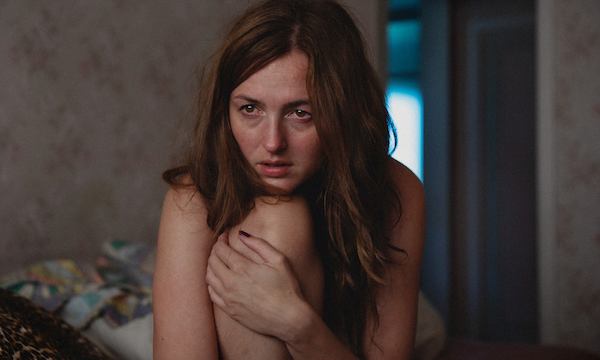Movie review by Greg Carlson
Horror fans who loved director Tomas Alfredson’s terrific 2008 adaptation of John Ajvide Lindkvist’s vampire novel “Let the Right One In” will find much to appreciate about “Handling the Undead.” Based on Lindkvist’s second book, Norwegian filmmaker Thea Hvistendahl’s movie reimagines the slow zombie premise with a seemingly contradictory blend of the elegant and the macabre. An instant classic right at home within the popular subgenre almost single-handedly established by George Romero in 1968, Hvistendahl’s debut feature suggests the work of a veteran visual storyteller with many years of experience behind the camera.
In “Night of the Living Dead,” the reanimation of corpses may or may not be the result of a space probe explosion directing radioactive waves of energy toward Earth. “Handling the Undead” establishes its own mythology via an equally inexplicable phenomenon: some kind of unusual surge of electrical power in Oslo returns the recently deceased to life. In both movies, the cause is unimportant, even inconsequential, compared to the immediate aftermath. In Romero’s film, the unstoppable onslaught of a horde of shambling ghouls fueled the nightmare. Hvistendahl contemplates the equally unsettling ways we might react if our dearest loved ones were resurrected.
Significant similarities between “Night of the Living Dead” and “Handling the Undead” are abundant, but the difference between the two tales might at first be characterized in part as a matter of the external (zombies attacking us) versus the internal (how we reconcile the impossibility of corporeal rebirth). Both movies inspire us to confront our fears about death’s unknowable features and apply some deep thinking to an aspect of existence most people avoid at all costs. Hvistendahl appreciates the power of silence. Key collaborator Pål Ulvik Rokseth’s cinematography complements the style with gorgeous lighting and austere compositions worthy of Henning Bendtsen’s images for Carl Theodor Dreyer’s thematically sympathetic “Ordet.”
Even though Renate Reinsve’s grieving mother Anna might be the first among equals in Hvistendahl’s ensemble, the surrounding actors are fully committed to the movie’s realistic and somber tone. Anders Danielsen Lie, Reinsve’s co-star in “The Worst Person in the World,” confronts disbelief when his spouse (Bahar Pars) begins to breathe again after being killed in a catastrophic car wreck. In a third thread, an elderly woman makes her way back home not long after her own funeral. Unexpectedly, Reinsve and Lie don’t share any scenes, but the commitment to keeping the three stories separate has the effect of compounding the escalating dread and despair.
In his indispensable 2008 study of “Night of the Living Dead,” Ben Hervey wrote that the film’s pleasures center on “destruction: of generic convention, taboo, people, property, the natural order and ‘normal’ life.” Hervey’s words remind us of another way that “Handling the Undead” owes a debt – like all zombie movies since – to the 1968 film. Hvistendahl’s movie dispenses with the exact same kind of grim delights embedded in “Night of the Living Dead,” but its focus on disruption and disorder, like its predecessor, is handled with the highest respect. Given the ongoing popularity of the zombie in film and television, anything that feels like a genuine innovation or new treatment seems rare indeed.
“Handling the Undead” premiered at the 2024 Sundance Film Festival and will be released in select United States locations starting May 31.
